UML Class Diagrams | UML Tutorials Help
UML Class Diagrams
Class Diagram is that type of uml diagram which show the relationship between the classes. In Class Diagram the classes represent the objects, interactions between the application and the classes. Mostly Class Diagram is used to show the concept of the system. Class Diagrams are the building block of any object oriented solution. We provide Class Diagram Assignment Help and complete your assignment on time A class diagram has three parts, name at the top, attributes in the middle and operations or methods at the bottom.
Basic Class Diagram Symbols And Notations:
Classes:Classes are represented with rectangles divided into compartments. The class name is placed at the first partition (centered, bolded, and capitalized), attributes in the second partition, and operations into the third.
Class Name at the Top
Active Class: Active classes initiate and control the flow of activity, while passive classes store data and serve other classes. Active classes are shown with a thicker border.

Class Diagram Active Class
Visibility: Visibility is used to signify who can use access the information contained within a class. Private visibility is limited to class in which it is defined. Public visibility allows all other classes to view the information. Protected visibility allows child classes to access information they inherited from a parent class.
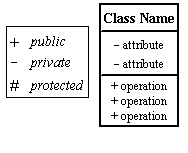

Representation of Visibility Sign in Class Diagram
Associations: Associations are used to represent the family of links. It shows the static relationships between classes. Place association names above, on, or below the association line. Use a filled arrow to indicate the direction of the relationship. Place roles near the end of an association. Roles represent the way the two classes see each other.
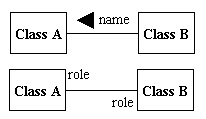
Class diagram example of association between two classes
Multiplicity (Cardinality): A symbol which shows the number of instances of one class linked with other class is called Multiplicity. For example, one company has one or more employee but each employee will work for one company.
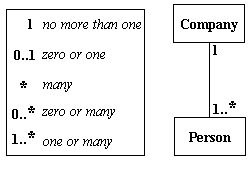
Class Diagram Multiplicity between company and person
Constraint: Place constraints inside curly braces {}.
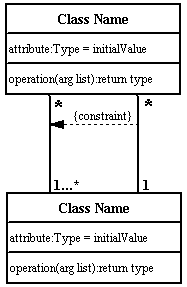
Constraint between two classes
Composition and Aggregation: Composition is a special type of aggregation that denotes a strong ownership between Class A, the whole, and Class B, its part. Illustrate composition with a filled diamond. Use a hollow diamond to represent a simple aggregation relationship, in which the whole class plays a more important role than the part class, but the two classes are not dependent on each other. The diamond end in both a composition and aggregation relationship points toward the whole class or the aggregate.
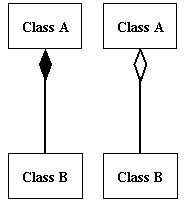
Class diagram showing Composition between two classes at left and Aggregation between two classes at right
Generalization: Generalization is also called inheritance or an is a relationship. It refers to a relationship between two classes where one class is a specialized version of another. For example, Rose is a type of flower. So the class Rose would have a generalization relationship with the Class flower.
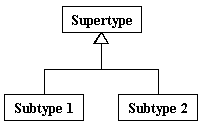
Class Diagram Generalization
The purpose of a class diagram is to depict the classes within a model. In an object oriented application, classes have attributes, operations and relationships with other classes. A class diagram shows the static structure of the problem/solution domain, where entities and their relationship is highlighted along with their attributes and responsibilities. The class diagram whether it is at high level (abstract level) or low level (implementation level) it shows the actual logic behind the execution of software/applications.
To submit UML class diagrams assignment Click here




